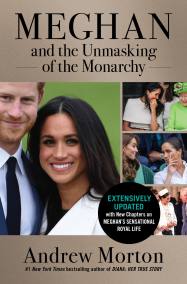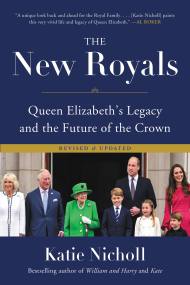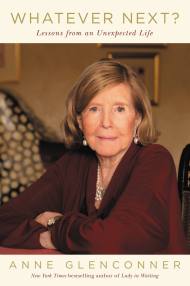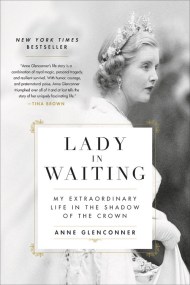Promotion
Use code BEST25 for 25% off storewide. Make sure to order by 11:59am, 12/12 for holiday delivery!
By clicking “Accept,” you agree to the use of cookies and similar technologies on your device as set forth in our Cookie Policy and our Privacy Policy. Please note that certain cookies are essential for this website to function properly and do not require user consent to be deployed.
Elizabeth & Margaret
The Intimate World of the Windsor Sisters
Contributors
Formats and Prices
- On Sale
- Apr 5, 2022
- Page Count
- 384 pages
- Publisher
- Grand Central Publishing
- ISBN-13
- 9781538700457
Price
$18.99Price
$23.99 CADFormat
Format:
- Trade Paperback $18.99 $23.99 CAD
- ebook $11.99 $15.99 CAD
- Audiobook Download (Unabridged) $27.99
This item is a preorder. Your payment method will be charged immediately, and the product is expected to ship on or around April 5, 2022. This date is subject to change due to shipping delays beyond our control.
Buy from Other Retailers:
They were the closest of sisters and the best of friends. But when, in a quixotic twist of fate, their uncle Edward Vlll decided to abdicate the throne, the dynamic between Elizabeth and Margaret was dramatically altered. Forever more Margaret would have to curtsey to the sister she called ‘Lillibet.’ And bow to her wishes.
Elizabeth would always look upon her younger sister’s antics with a kind of stoical amusement, but Margaret’s struggle to find a place and position inside the royal system—and her fraught relationship with its expectations—was often a source of tension. Famously, the Queen had to inform Margaret that the Church and government would not countenance her marrying a divorcee, Group Captain Peter Townsend, forcing Margaret to choose between keeping her title and royal allowances or her divorcee lover.
From the idyll of their cloistered early life, through their hidden war-time lives, into the divergent paths they took following their father’s death and Elizabeth’s ascension to the throne, this book explores their relationship over the years. Andrew Morton’s latest biography offers unique insight into these two drastically different sisters—one resigned to duty and responsibility, the other resistant to it—and the lasting impact they have had on the Crown, the royal family, and the ways it adapted to the changing mores of the 20th century.
-
"The king of royal tea...Morton provides rich context on the coldness of royal life...Margaret’s tale is revelatory."New York Times
-
"A diligent and well-researched job, examining the closeness of the sisters and their conflicted relationship in a seamless, readable way."Wall Street Journal
-
“Deliciously detailed, sometimes gossipy, often moving, this in-depth examination of royal siblings is sure to be in demand.”Booklist
-
"Thoroughly researched and well written, the most comprehensive account of the complex relationship between the Queen and Princess Margaret to date. Fascinating and enjoyable."Sarah Bradford, New York Times bestselling author of Elizabeth
-
"The dynamic between the two royal sisters is endlessly fascinating when presented by Andrew Morton. Informative, insightful, and never a dull page. Morton at his forensic best."Ingrid Seward, author of Prince Philip Revealed and My Husband and I, editor-in-chief of Majesty magazine
Newsletter Signup
By clicking ‘Sign Up,’ I acknowledge that I have read and agree to Hachette Book Group’s Privacy Policy and Terms of Use







